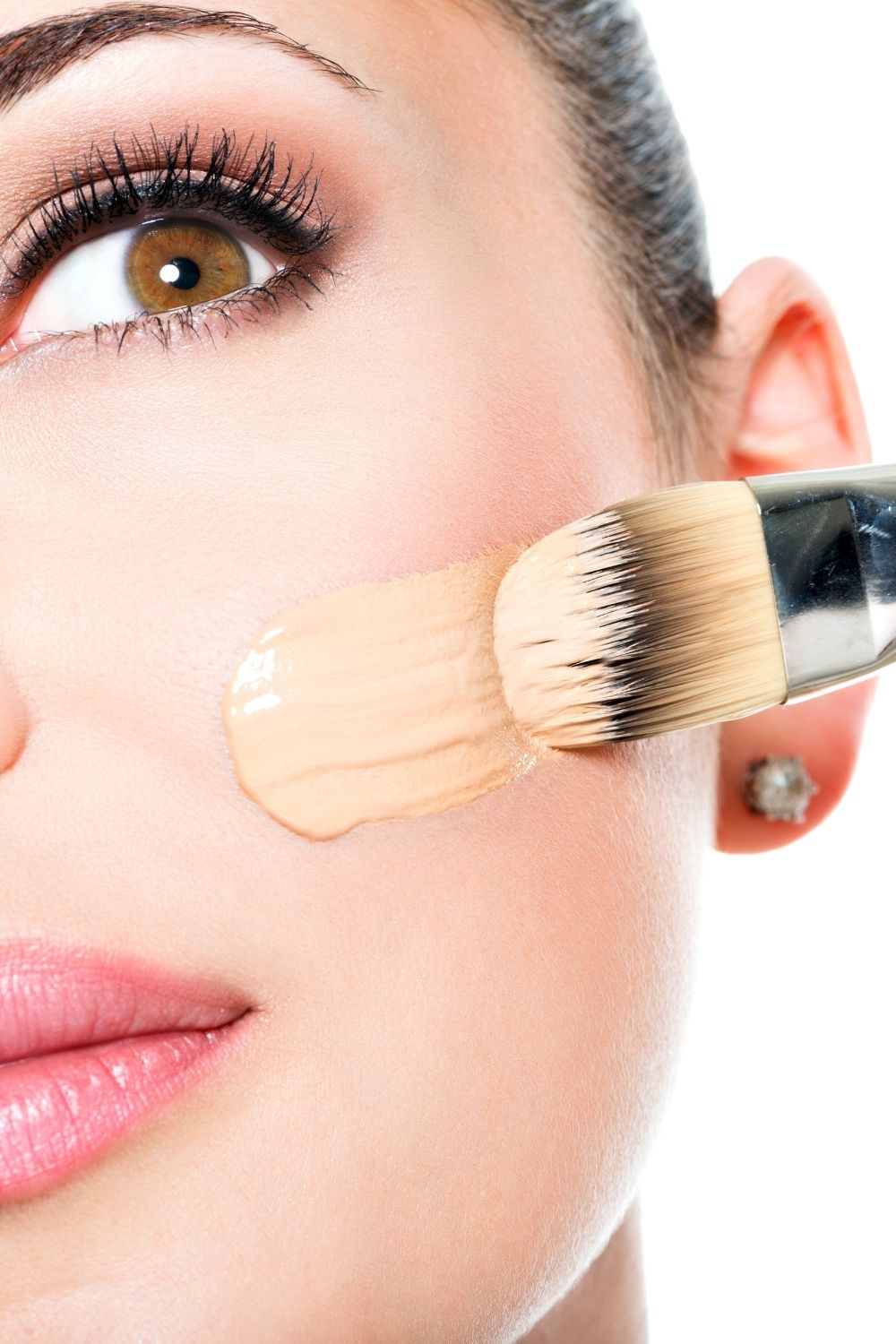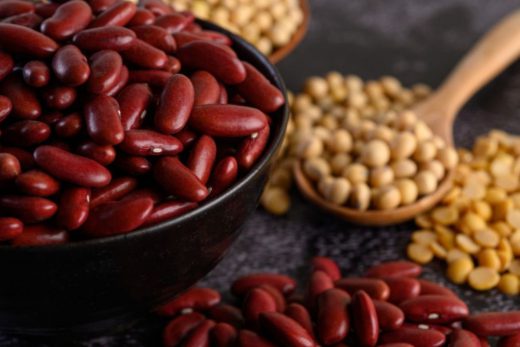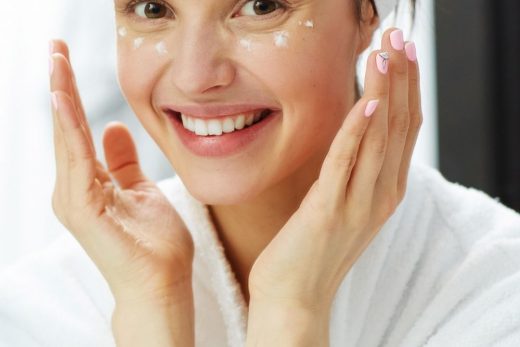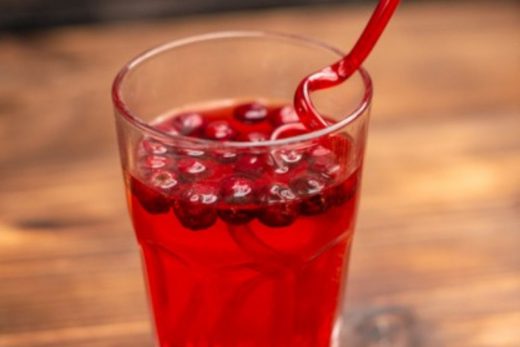There are lots of makeup-brush cleaners out there, from brands like Make Up Forever, which come in a spray form that can help you freshen up your makeup brushes when you’re in a bind.
Or you can opt for a liquid brush cleaner (more on how to use those below), which can be a saving grace when you’re working on a time crunch and need to transition from lid color to crease color fast. All of the makeup artists that we spoke with used liquid brush cleaners.
One of Schumacher’s favorites is the Parian Spirit cleaner, which she loves for quick, daily cleanups. “It removes and disinfects in one step.”
Nam adds that one of the few liquid brush cleaning solutions she actually likes is MAC Cosmetics’. “It disinfects and gets the makeup out quickly, and it dries down pretty fast. My brushes don’t smell like chemicals, and they feel soft and ready to use again afterwards.”
Gowers swears by Cinema Secrets, which is a concentrated, professional-grade option that lasts for a very long time since a little goes a long way. “If you use it properly,” she says, “it’s a deeper clean than soap and water.” She also finds that the formula dries really quickly, preserves brushes longer, and conditions without leaving an oily sheen behind.
Lots of makeup lovers, and even the pros, look to everyday dish soaps and hand soaps to deep-clean their brushes; they’re gentle enough to use on makeup brushes and contain the ingredients to break down oils and powders.
Schumacher’s go-to gentle soap for deep-cleaning her brushes is Dr. Bronner’s Hemp Tea Tree Castile Soap. “I love it because it’s made from organic ingredients and it breaks down makeup buildup easily.” She also appreciates that it has a base of tea tree oil, which has natural antimicrobial properties for keeping her professional brushes squeaky-clean in between jobs.
Nam prefers using Trader Joe’s Grapefruit liquid hand soap or liquid dish soap for her natural-hair brushes; you can find it at a local Trader Joe’s store. “It leaves a clean smell and gets all of the color off of my brushes.”
Certain types of cleansers can be more effecting at removing certain makeup products. Nam says she’s discovered that deep-cleaning with bar soap is ideal for removing creamier products, such as concealers, lipsticks, and foundations, from synthetic brushes and Beautyblenders. “I love using the Beautyblender soaps,” she says. “The brand’s liquid and bar soaps gets everything out. The liquid soap is the only thing that will clean all the color out of the Beautyblenders; otherwise, you will need to use a bar of soap.”
Gowers also likes to use bar soaps for deep-cleaning things like Beautyblenders that get caked in foundation, and says that any mild soap will do (she likes the fancy Italian soaps you can find at Eataly).
During the cleansing process, using textured cleaning mitts and mats can help break up even the most budgeproof makeup residue, and they’re extra efficient since they’re often divided into sections with varying textures that are designed to break up pigment on all your different tools—from fan brushes to sponges—based on each tool’s shape and bristle length. Mats also usually have suction cups on the back to prevent them from slipping and sliding in your sink.
Schumacher recommends the hand-held palm-size Brush Hero Brush Cleansing Pad, which has two textured surfaces for cleansing eye and face makeup brushes. Nam likes this affordable Ranphykx mint green cleaning mat, which has seven different sections as well as suction cups on the back. And Sigma Beauty has some of the most popular textured cleaning mats out there, including this mitt that you can wear on your hand.
The Step-by-Step Method
Overall, the makeup artists we spoke to had very similar methods for cleaning makeup brushes with different types of products. We distilled all their methods below, with some additional tips from each expert. If you’re cleaning a makeup sponge, the same methodology applies, though you’re really going to want to stick to liquid cleaners or bar soaps.
Quick-cleaning with a spray:
Spray your brush a few times, with the heads pointing down to prevent any moisture from seeping into the glue.
Swirl your brush against a clean cloth or paper towel to loosen up the pigments.
Air-dry your brushes on a flat surface.
Quick-cleaning with a liquid cleaner:
Fill a small bowl with a thin layer of the solution (for super-concentrated options like Cinema Secrets, less is more).
Dip the tip of your brush into the solution.
Gently run your brush back and forth on a clean paper towel or a microfiber towel until all the product buildup is loosened up and your brush feels clean.
Air-dry your brushes on a flat surface.
Deep-cleaning with soap and water:
Holding your brushes with the bristles facing down, gently run lukewarm water in the sink and wet the tips of the bristles. “You don’t want the water to get inside the barrel of your brushes because over time it can break down the adhesive that is holding your brush together and possibly erode your brush handles if they are made of wood,” says Nam. Gowers also notes that you don’t want to fully submerge the brush bristles, and that you should avoid rinsing under hot water, “which can loosen up the glue.”
Add a drop of your soap of choice to a textured cleansing pad (or even something like your palm), and swirl the brush into the soap until it’s fully lathered up and any pigment or dirt is removed. Or, if you’re using a bar soap, gently rub your makeup brush or sponge into the soap, creating a lather.
Gently squeeze your makeup brush or sponge to remove any excess cleanser or water.
Rinse again with clean water, with the bristles facing downward. Gowers notes that again, you don’t want to fully submerge the brush bristles, and that you should avoid rinsing under hot water, “which can loosen up the glue.”
Gently squeeze out any excess water, and mold your bristles back into place so they will dry correctly.
Lay your brushes flat to dry on a towel or paper towel. Schumacher says that when she does this step, she leaves the brush heads hanging over a table edge, “so there’s air circulating around the entirety of the bristles.”
Want to speed up the drying? Nam likes to direct the breeze from a fan at her makeup brushes. Just make sure that you’re avoiding heat from devices like hair dryers, which can dry out the bristles.





